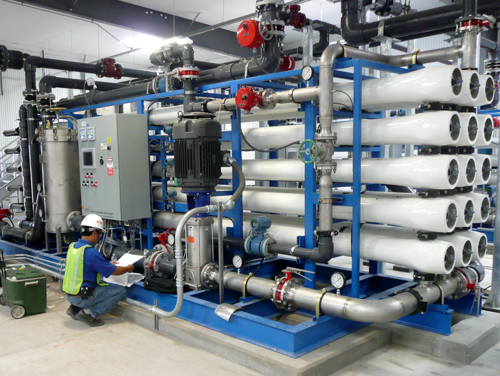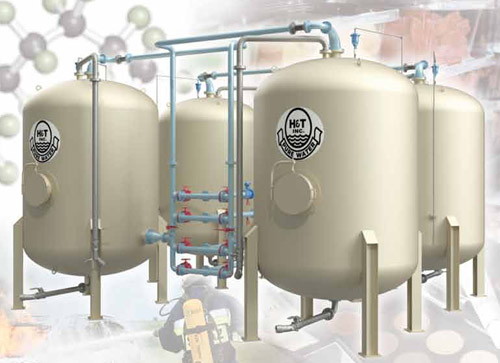Your Guide to PFAS Treatment Technologies and Benefits
The prevalence of PFAS contamination in water resources requires a thorough understanding of readily available therapy innovations. Numerous techniques, such as activated carbon purification, ion exchange systems, and advanced oxidation procedures, present unique advantages in addressing these consistent pollutants. Each innovation not only targets certain PFAS compounds but likewise plays an essential role in improving overall water high quality and protecting environmental integrity. As areas grapple with the effects of PFAS exposure, the selection of an appropriate therapy strategy ends up being significantly important, triggering a more detailed assessment of these technologies and their particular advantages.
Recognizing PFAS Contamination
Understanding PFAS contamination is important for addressing its pervasive impact on environmental and human health and wellness (m270 pfas treatment). Per- and polyfluoroalkyl compounds (PFAS) are a team of synthetic chemicals widely used in various industrial and consumer products due to their water- and grease-resistant properties. Typically discovered in firefighting foams, non-stick kitchenware, and water-repellent textiles, PFAS have actually gotten in the environment with manufacturing procedures, wastewater discharges, and seeping from land fills
When launched, these substances continue the environment, resulting in widespread contamination of soil and water resources. Their one-of-a-kind chemical structure, characterized by solid carbon-fluorine bonds, provides them immune to deterioration, leading to a phenomenon understood as "permanently chemicals." As a result, PFAS can build up in the human body and the food web, possibly triggering unfavorable health and wellness impacts, including body immune system interruption, developmental concerns, and an increased risk of particular cancers cells.
Governing companies and wellness organizations are progressively identifying the relevance of PFAS contamination, triggering efforts to check, evaluate, and mitigate its impacts. Understanding the paths of PFAS contamination is essential for notifying public law and developing efficient techniques to secure both environmental and human health and wellness.
Summary of Treatment Technologies
Various therapy modern technologies have actually been developed to resolve the difficulties positioned by PFAS contamination in water and dirt. These modern technologies can be extensively categorized into several categories, each with its distinct systems and performance in getting rid of PFAS compounds.
One prominent technique is ion exchange, which makes use of resin products to catch and remove PFAS from infected water. An additional innovation, progressed oxidation procedures (AOPs), employs strong oxidants and ultraviolet light to break down PFAS into much less dangerous materials.

Turned On Carbon Filtration
Turned on carbon filtering is a commonly used method for the removal of PFAS from polluted water, known for its capacity to adsorb a broad range of organic substances. This innovation uses activated carbon, a highly permeable product with a considerable surface location, which assists in the binding of PFAS particles via physical adsorption. The efficiency of triggered carbon in eliminating PFAS is influenced by a number of variables, consisting of the kind of carbon made use of, the call time, and the concentration of PFAS in the water.
Among the benefits of triggered carbon purification is its versatility; it can be carried out in various setups, such as granular activated carbon (GAC) systems or powdered turned on carbon (PAC) systems. GAC systems are normally used in larger-scale applications, while PAC can be made use of in smaller sized or temporary configurations. Additionally, the innovation is reasonably easy to operate and maintain, making it available for many water therapy facilities.

Ion Exchange Equipment
Ion exchange systems represent an additional reliable technique for the elimination of PFAS from infected water, complementing methods like turned on carbon purification. These systems operate on the concept of exchanging ions in the click here to find out more water with Resources ions held on a resin material. Ion exchange materials can be especially created to target the negatively billed PFAS substances, successfully capturing them and permitting cleaner water to travel through.
One of the primary advantages of ion exchange systems is their capability to remove a wide variety of PFAS, consisting of both long-chain and short-chain variations. This adaptability makes them ideal for different applications, ranging from local water therapy to industrial processes. Furthermore, ion exchange systems can commonly attain reduced detection limitations for PFAS compared to a few other treatment techniques, thus improving water quality.
However, it is important to keep track of and manage the regrowth of ion exchange media, as the efficiency can decline in time due to saturation. Correct maintenance and replacement of the material are essential for maintaining the system's efficiency. Generally, ion exchange systems supply a reputable and effective option for PFAS removal, adding considerably to secure alcohol consumption water criteria and environmental management.
Advanced Oxidation Processes
Advanced Oxidation Processes (AOPs) use powerful oxidants to properly degrade PFAS compounds in infected water. These cutting-edge treatment techniques produce highly reactive types, such as hydroxyl radicals, that can break down complicated PFAS particles into much less unsafe results. m270 pfas treatment. AOPs typically employ mixes of ultraviolet (UV) light, ozone, hydrogen peroxide, or Fenton's reagent, improving the oxidation capacity and boosting destruction efficiency
The main benefit of AOPs hinges on their capacity to target a wide variety of PFAS substances, consisting of both long-chain and short-chain variations. This versatility is essential, as PFAS contamination frequently entails blends of various substances with differing chemical structures. Additionally, AOPs can be incorporated right into existing check my blog water treatment systems, making them a functional remedy for lots of communities and industries.
Nonetheless, the execution of AOPs can be resource-intensive, needing cautious consideration of operational expenses and energy usage. Furthermore, while AOPs are effective in breaking down PFAS, they might not completely get rid of all results, demanding further treatment steps - m270 pfas treatment. On the whole, AOPs represent an encouraging avenue for resolving PFAS contamination, contributing to cleaner water sources and improved public health protection

Conclusion
By selecting the suitable technology, neighborhoods can boost water quality, secure public wellness, and minimize the environmental risks linked with PFAS direct exposure. Proceeded study and implementation of these methods are essential for effective management of PFAS contamination in affected areas.